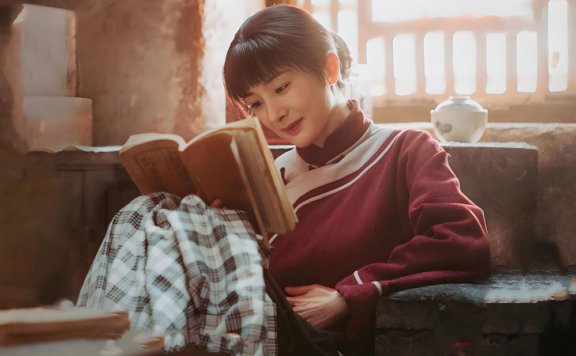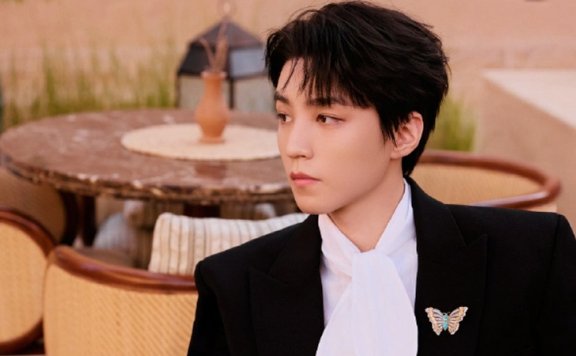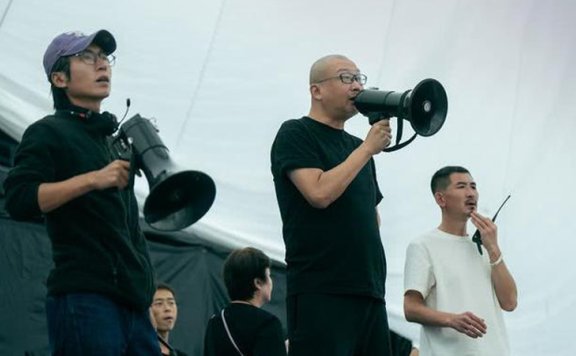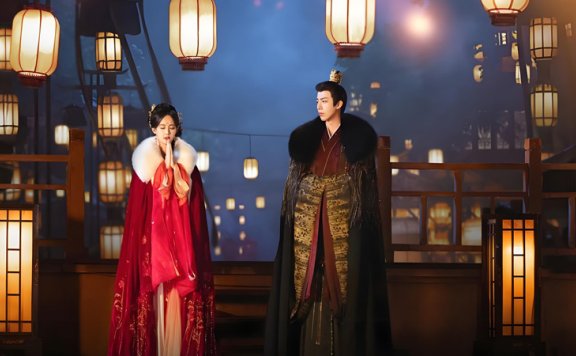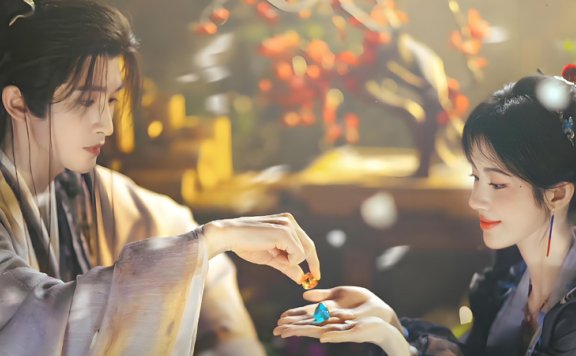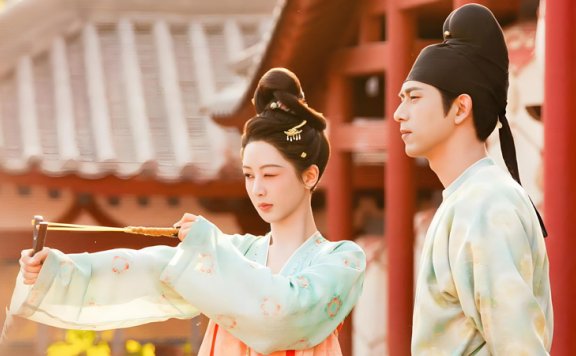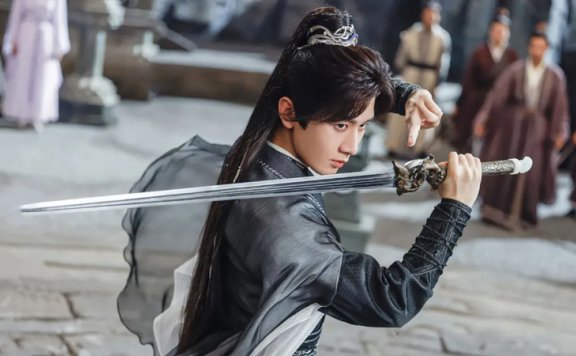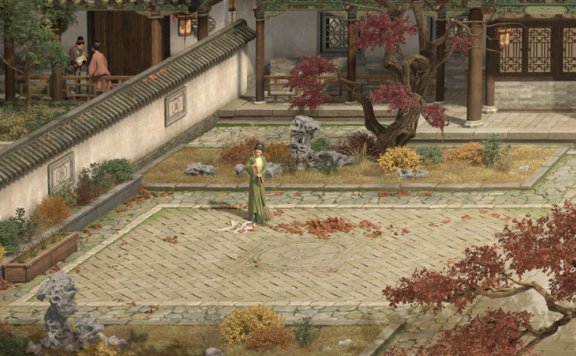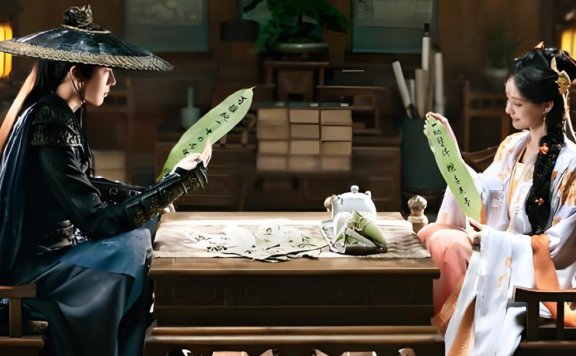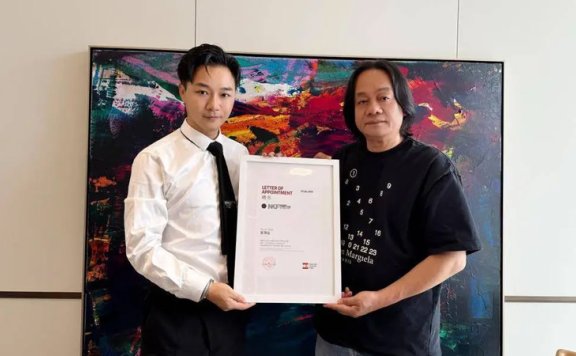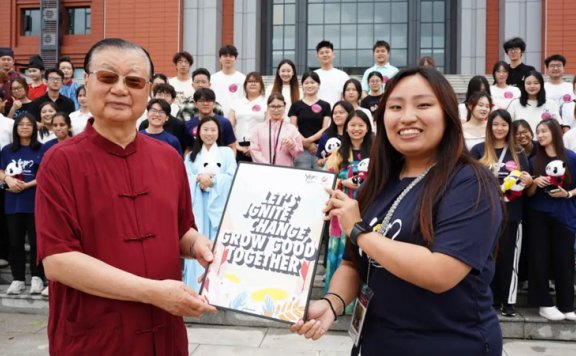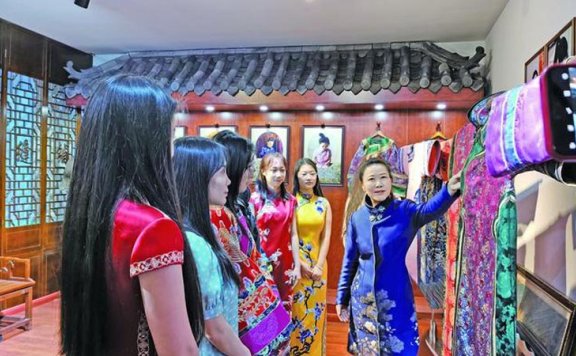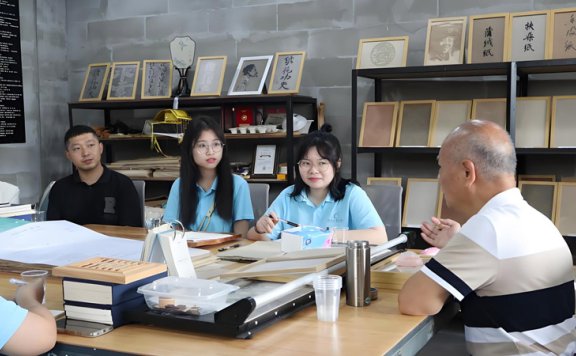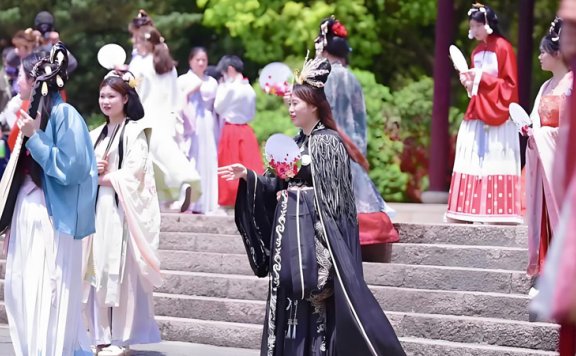Article
搜索结果:
-
Yang Mi's Make-or-Break Moment in Sheng Wan Wu
This summer, CCTV premieres Sheng Wan Wu (生万物), a rural drama starring Ou Hao (欧豪) and Yang Mi (杨幂). While Ou’s performance is anticipated, Yang Mi’s role as a tenacious village woman could redefine her career or cement her stagnant trajectory. Amid a lackluster season for films and series, this production tests whether star power can transcend China’s entertainment fatigue. The Summer Screen Dilemma China’s summer entertainment season feels unusually muted this year. Blockbuster films like She’s Got No Name (酱园弄) starring Zhang Ziyi (章子怡) and Chen Sicheng’s (陈思诚) thriller Malice (恶意) failed to ignite audiences, despite A-list pedigrees. Similarly, streaming platforms cycle through forgettable series lacking standout narratives or performances. This creative stagnation highlights viewers’ craving for substance over spectacle. Against this backdrop, CCTV’s planned releases—Sword Rose (利剑玫瑰) and Sheng Wan Wu—offer glimmers of intrigue. Both star actresses synonymous with popularity rather than critical acclaim: Dilraba and Yang Mi. For Yang Mi, Sheng Wan Wu arrives at a pivotal juncture. As an '85 Generation' actress nearing 40, her two-decade career relies heavily on costume dramas and romantic leads. Mainstream awards consistently overlook her, and audience critiques of her acting persist. Transitioning to gritty realism isn’t just artistic growth—it’s survival.… -
Wang Junkai Attends the 2025 Esports World Cup
Riyadh's July heat met a different kind of fire on the Esports World Cup (EWC) red carpet. Wang Junkai, stepping onto Saudi soil as China's exclusive ambassador for the 2025 tournament, ignited global attention. His appearance transcended the expected celebrity cameo, becoming a statement of evolving artistry and cultural convergence. Gone was the familiar "National Little Brother" image; in its place stood a figure radiating controlled power and international sophistication. The EWC's choice of ambassador signaled more than star power—it marked a deliberate fusion of entertainment, competitive gaming, and cultural diplomacy on the world's newest mega-stage. Sartorial Metamorphosis Wang Junkai commanded the EWC entrance in head-turning precision. A sharply tailored black Balmain single-breasted suit, defined by its assertive peak lapels, formed the foundation. It spoke of authority, meticulously crafted. Beneath it, a crisp white AMI shirt offered minimalist contrast. Christian Louboutin's signature red soles punctuated his stride with subtle luxury. Yet, the true focal point was the Buccellati gold butterfly brooch pinned near his heart. This intricate piece, far from delicate, possessed an unexpected edge—a metaphor for Wang’s own artistic transformation. His grooming completed the evolution. A severely swept-back hairstyle exposed clean, strong features, amplifying a newfound maturity. Dark sunglasses… -
The Untold Rescue Mission of Dongji Island
The sea holds countless secrets, but few as compelling as the story brought to light in the upcoming film Dongji Island (东极岛). Directed by Guan Hu (管虎) and Fei Zhenxiang (费振翔), this cinematic endeavor plunges audiences into 1943, when a Japanese transport ship carrying 1,816 British POWs was torpedoed near China's eastern islands. Facing certain death as their captors abandoned ship and sealed the holds, the prisoners' fate hung in the balance. Against impossible odds, local fishermen from Dongji Island launched their small boats directly into enemy fire, embodying an ancient creed: "Those in peril at sea must be saved." This act of extraordinary courage, forgotten for decades, forms the powerful core of a film six years in the making, demanding monumental effort from cast and crew to resurrect a truth the world needs to witness. Releasing nationwide on August 8th, Dongji Island stars Zhu Yilong (朱一龙), Wu Lei (吴磊), and Ni Ni (倪妮), leading an ensemble cast in a testament to human resilience. Anchored in Truth Recreating this buried history required more than sets and scripts; it demanded pilgrimage. Guan Hu and Fei Zhenxiang led their team to the actual Dongji Islands, seeking the spirit of the past where… -
Coroner‘s Diary Zhaoxuelu: A Historical Mystery with Forensic Thrills
Historical suspense drama Coroner‘s Diary (Zhaoxuelu, 朝雪录) surprises audiences with a sudden July 13 premiere on iQIYI. Forensic examiner Qin Wan (秦莞) and General Yan Chi (燕迟) navigate eight chilling cases to expose imperial corruption. Li Landi (李兰迪) transforms into forensic examiner Qin Wan, hiding her identity after her family’s unjust execution. Beside her stands General Yan Chi, portrayed by Ao Ruipeng (敖瑞鹏), whose military prowess shields their investigation into eight interconnected atrocities. Their partnership anchors Zhaoxuelu, which advanced its debut by three days to dominate summer streaming. Director Li Huizhu’s (李慧珠) signature visual tension permeates previews showcasing skeletal remains in moonlit courtyards and bloodstained scrolls. This unexpected scheduling shift capitalizes on intense fan anticipation fueled by Zhou Huang’s haunting soundtrack and viral promotional clips. Premiere Strategy Shift Platform iQIYI prioritized Zhaoxuelu Files following robust early engagement metrics. Over 250,000 viewers pre-saved the series before its rescheduled launch, signaling strong market readiness. Executives moved the premiere to fill a content gap left by A Dream Within a Dream’s (书卷一梦) conclusion, avoiding direct competition with romance drama Cherry Amber (樱桃琥珀). Six consecutive episodes debuted at noon on July 13, establishing immediate narrative immersion. Audience forums buzzed with approval for the accelerated… -
The Anti-Trope: The Journey of A Dream within a Dream
The 2023 costume drama A Dream within a Dream (书卷一梦), starring Li Yitong (李一桐) and Liu Yuning (刘宇宁), delivered a finale that reignited its initial spark. Premiering on June 26th with record-breaking viewership on iQiyi, the series captivated audiences with its unique premise: actress Song Xiaoyu (宋小鱼) accidentally time-travels into her script, becoming the character Song Yimeng (宋一梦). Trapped within the narrative machinery of a period drama titled Qing Ning Yi Meng (清宁一梦), she encounters the seemingly ruthless nobleman Nan Heng (南珩). Their struggle against predetermined plot points promised a fresh take on the genre. While the opening episodes thrilled with fast pacing and clever subversion of tropes, the middle section became mired in repetitive subplots and uneven character development, causing viewer retention issues despite a strong finale rally. This trajectory from high potential to mid-season slump and eventual recovery offers a compelling case study in modern Chinese costume drama storytelling. The Anti-Trope The initial episodes hooked viewers precisely because they defied expectations. Song Xiaoyu's modern sensibilities clashed humorously and dramatically with the rigid, often illogical, world of Qing Ning Yi Meng. Her awareness of being a character within a script provided a meta-commentary on genre conventions. Nan Heng, introduced… -
Ne Zha 2 English Voiceover Debuts August 22 with Michelle Yeoh
The highly anticipated English-dubbed version of Ne Zha 2 (哪吒2): The Devil Comes is set to premiere across North America and Australasia on August 22, 2025, marking a strategic expansion for this record-breaking Chinese animation. Oscar-winning actress Michelle Yeoh has joined the cast, lending her voice to an undisclosed role, as revealed by production partners China Lion Film and A24. This release aims to captivate audiences in the United States, Canada, Australia, and New Zealand with premium formats like IMAX and 3D, addressing cultural preferences for dubbed films over subtitles. Following its monumental success in China, where it grossed over $22 billion globally and dominated box office charts, this new iteration promises to amplify the film's universal themes of resilience and heritage for English-speaking viewers. Record-Setting Achievements The original Chinese release of Ne Zha 2 captivated audiences for an extended 153-day run starting January 29, 2025, becoming a cultural phenomenon with unprecedented milestones. It shattered 113 records and earned 308 accolades, cementing its status as China's all-time highest-grossing film and the global animation leader. Global earnings surpassed $22 billion, placing it among the top five highest-grossing movies in history, a testament to its widespread appeal and storytelling power. In North… -
Ju Jingyi's Style Evolution and Zhang Yunlong's Poise in Lai Zhan
Lai Zhan (来战), a highly anticipated fantasy drama, is generating significant buzz primarily due to its visual spectacle. Lead actress Ju Jingyi’s (鞠婧祎) six distinct costumes have become a focal point of fan discussions, showcasing a blend of whimsy and elegance perfectly suited to her character, Ada (阿黛). Co-star Zhang Yunlong (张云龙), portraying her mentor, brings an understated gravitas. Their combined on-screen presence promises a feast for the eyes, elevating the drama beyond typical genre expectations. Ada’s Vibrant Transformations Ju Jingyi’s portrayal of Ada features dynamic costume changes that highlight her character’s playful yet resilient nature. The iconic blue ensemble with double-loop "Gourd Buns" hairstyle radiates doll-like precision, framing her delicate features. This look, captured in early stills, immediately captured audience attention for its meticulous craftsmanship and Ju’s ethereal presence. Equally striking is the fiery orange outfit, where flowing sleeves and vivid ribbons create a "Koi Fish" effect. Paired with twin ponytails, the design merges traditional fantasy elements with modern anime aesthetics. The vibrancy symbolizes Ada’s spirited personality, while the movement of the fabric adds kinetic energy to static images. A softer iteration of the orange costume introduces subtle blue hair accessories, offering contrast through refined details. This version appears… -
How Jin Brocade Weaves Through Chinese Drama Titles
The recent phenomenon of historical dramas embracing the character "jin" (锦, brocade) in their titles, like the hit series Flourished Peony (锦绣芳华), reveals more than a fleeting trend. This linguistic choice taps into deep cultural veins, transforming titles into shimmering gateways of promise. From Colourful Life (锦绣良缘) to Under the Power (锦衣之下), "jin" functions as a multifaceted emblem—evoking luxury, craftsmanship, and narrative ambition. Its recurrence speaks to a shared visual and symbolic language between creators and audiences, where a single character conjures worlds of opulence and intrigue. Characters Woven in Gold "jin" is far more than a decorative flourish. Its linguistic structure—combining "gold" and "silk" —historically signified textiles as precious as metal. As early as the Han Dynasty, scholar Xu Shen (许慎) defined "jin" as "colorful patterned silk," while Eastern Han lexicographer Liu Xi (刘熙) noted its value "equated with gold due to meticulous craftsmanship." This heritage persists in modern dramas, where titles like The Sword and the Brocade (锦心似玉) frame protagonists’ virtues as rare and refined. The character inherently elevates a title’s stature. When paired with "xiu" (绣) in "jinxiu," it becomes "splendid" or "magnificent," transforming ordinary words into poetic ideals: Flourished Peony suggests flourishing beauty. These combinations signal… -
Fu Shan Hai: Cheng Yi's 3 Role Ignites Summer Wuxia Craze
The highly anticipated Wuxia drama Fu Shan Hai (赴山海) is poised to set the summer viewing season ablaze, premiering on iQiyi July 22nd. This S+ production, a flagship entry in iQiyi's "Eastern Legends" lineup, has already shattered genre presale records, surpassing 8 million reservations across platforms. Adapted from Wen Rui'an's (温瑞安) revered Divine Land Swordsman (神州奇侠), the series injects a bold twist into the classic tale: a disillusioned modern editor, Xiao Mingming (played by Cheng Yi), finds himself transported into the very martial arts world he once penned. Thrust into the body of the youthful swordsman Xiao Qiushui (萧秋水), his journey from novice to revered hero unfolds against a backdrop of breathtaking landscapes and intricate conspiracies, promising a potent mix of nostalgia and novelty that has captivated audiences even before its debut. Transmigration Meets Tradition Fu Shan Hai masterfully blends the established lore of Wen Rui'an's universe with a contemporary "transmigration" narrative device. Xiao Mingming's (肖明明) abrupt transition from office drudgery to the perilous Jianghu creates immediate comedic and dramatic friction. His modern sensibilities clash humorously with ancient customs, offering fresh commentary on classic Wuxia tropes. Crucially, the adaptation retains the essence of the source material. Iconic characters like the… -
Curious Tales of a Temple: Showcasing the Artistic Charm of Chinese Animation
The animated anthology Curious Tales of a Temple (聊斋:兰若寺) premiered July 12th, reimagining classical Chinese literature through groundbreaking visual storytelling. Produced by Light Chaser Animation across four years, the 152-minute film interconnects five tales from Pu Songling’s (蒲松龄) 18th-century Strange Tales from a Lonely Studio (聊斋志异) with an original narrative thread. 6 directors crafted distinct artistic visions for each segment, creating a cohesive exploration of human desires and spiritual resilience. Opening day box office surpassed $2.2 million, signaling strong audience resonance with its innovative fusion of heritage and contemporary animation techniques. Emotional Journeys Through Folklore The anthology examines universal truths through supernatural parables. Taoist of the Mountain Lao (崂山道士) exposes greed’s consequences using tactile felt-textured animation, where heavy wool rendering symbolizes moral weight. The Lotus Princess (莲花公主) transforms a tragic romance into a child’s dreamscape adventure, celebrating innocence with floating petals and luminescent insects. Director Xie Junwei (谢君伟) describes this segment as "a bridge between adult nostalgia and children’s wonder," blending whimsy with emotional authenticity. Nie Xiaoqian (聂小倩) amplifies the original ghost story’s tension by setting it against wartime chaos, intensifying the bond between scholar Ning Caichen (宁采臣) and the spirit Nie Xiaoqian. Director Zou Jing (邹靖) explains the adaptation… -
A Dream Within a Dream: The Script That Controls Fate
A Dream within a Dream (书卷一梦) isn't just another costume drama; it's a masterclass in bending genres and expectations. This captivating series blends historical intrigue with meta-fiction, following actress Song Yimeng's (宋一梦) chaotic journey after being mysteriously transported into the very period script she was reading. Trapped as her character, she battles against a predetermined tragic fate involving an arranged marriage to Chu Guihong (楚归鸿), facing repeated, bizarre deaths that force the narrative to restart. The show's brilliance lies in its witty subversion of tired tropes, particularly the "forced love" dynamic, turning it into a source of both genuine tension and surprising humor. As Yimeng navigates this perilous, scripted world, her actions ripple through the lives of compelling supporting characters, creating a rich tapestry of rebellion, unexpected love, and self-discovery that resonates far beyond its comedic surface. Its clever plotting and charismatic performances solidify its status as a hidden gem demanding attention. Forced Love, Flipped Script The drama's most ingenious twist lies in its complete inversion of the typical "forced love" trope prevalent in historical romances. Instead of a domineering male lead relentlessly pursuing a reluctant heroine, A Dream within a Dream presents Nan Heng (南珩) as a character equally… -
Nanjing Fashion Week 2025: Zhang Zhaoda's Vision of Six-Dynasty Design
Nanjing elevates its fashion ambitions with the appointment of Zhang Zhaoda (张肇达), a foundational figure in Chinese design, as Honorary Chairman for its 2025 International Fashion Week. His participation signals a strategic push to position Nanjing at the forefront of global fashion dialogue. Beyond a ceremonial role, Zhang will headline the opening gala with his iconic brand MARK CHEUNG, leveraging his four-decade legacy bridging Eastern aesthetics and international runways. This collaboration aims to transform Nanjing from a historical gem into a dynamic nexus for luxury commerce, cultural innovation, and trendsetting creativity. Design Philosophy Redefined Zhang Zhaoda’s journey began when Chinese design was virtually absent from global stages. His early 1980s collections introduced a nuanced equilibrium between market viability and artistic expression. The MARK CHEUNG label, renowned for its bias-cut silhouettes and subdued palettes, demonstrated that tradition could converse fluently with modernity. His approach earned him China’s inaugural Golden Top Award and UNESCO recognition. Zhang’s work consistently avoids cliched cultural symbols. Instead, he extracts abstract principles from Chinese art—like the fluidity of ink wash paintings or the structural logic of Ming furniture—translating them into contemporary garments. This intellectual rigor established him as a translator of heritage rather than a revivalist. His… -
Xiangyunsha: New Chinese Fabric in Stitches
The quiet revolution in fashion isn't loud—it flows. Across bustling cities and serene landscapes, a refined aesthetic emerges: garments honoring heritage while embracing contemporary life. This movement transcends fleeting trends, weaving cultural threads into daily elegance. At its heart lies craftsmanship, where ancient techniques meet modern silhouettes. The Xiangyunsha (香云纱) embroidery set exemplifies this philosophy—unassuming luxury that speaks through texture, drape, and meticulous detail. The Fabric of Time Xiangyunsha isn’t merely silk; it’s alchemy. For centuries, artisans sun-dyed this fabric over 20 times, coaxing crackled patterns resembling aged porcelain. These "turtle wrinkles" aren’t flaws but narratives—each fissure a testament to patience. Unlike synthetics, Xiangyunsha breathes. Its porous structure wicks moisture, offering coolness in summer’s grip. With wear, magic unfolds. The fabric deepens in luster, developing an oil-like sheen that glows softly. This organic evolution makes every garment unique—a living heirloom. The black base in this set serves as a canvas, where light dances across subtle ridges, revealing hidden dimensions. Traditional dyeing uses mineral-rich river mud and plant extracts, yielding hues that harmonize with nature. Modern wearers inherit this legacy: cloth carrying earth’s poetry. Its weight feels substantial yet airy—structure without stiffness. Stitches of Sunlight Hand embroidery transforms fabric into art.… -
Wang Yibo: Chanel’s Icon Across 8 Runway Journeys
In just two years, Wang Yibo has cemented his status as a global luxury icon through an unprecedented eight appearances for Chanel. From his debut as brand ambassador to achieving a historic high fashion milestone, each meticulously crafted runway moment has not only showcased Chanel's timeless codes but also forged Yibo's unique "Bo-style" signature. This whirlwind journey across three continents represents a masterclass in brand synergy and personal evolution, reshaping perceptions of modern masculinity within haute couture and propelling Chanel's youthful resonance across Asia and beyond. His presence consistently transcends mere attendance, becoming cultural moments that ignite global trends and solidify a symbiotic partnership rarely seen in the industry. Signature Evolution Forged Wang Yibo's Chanel journey began in May 2023 in Los Angeles, radiating California cool in light tweed and retro shades, instantly establishing the "Chanel Boy" persona. His Tokyo debut weeks later saw him masterfully blend the house's classic black-and-white tweed with Eastern aesthetics, a synergy amplified by a bespoke promotional video. By the Paris Spring 2024 show, Yibo introduced a romantic edge, his layered pearl necklaces beneath a grey-blue tweed coat sparking international searches and trendsetting discussions. The Shenzhen show later that year revealed a bolder experimentation, pairing… -
Singaporean Students Immerse in Chengdu's Culture at Jin Cheng College
On July 5th, 2025, a vibrant group of 35 students from Singapore National University and Nanyang Technological University arrived at Jin Cheng (锦城) College in Chengdu. Their half-day visit promised cultural discovery and connection. Greeted warmly by the college leadership, including Founder Professor Zou Guangyan and President Professor Wang Yali, the Singaporean delegation joined Jin Cheng students for an exploration of campus life and shared traditions. The atmosphere buzzed with anticipation for the experiences ahead: discovering campus landmarks, engaging in meaningful dialogue, and diving into hands-on cultural activities designed to foster genuine connection between the young people of both nations. Moments of Shared Discovery The initial encounter dissolved any hesitation. Ice-breaking games sparked laughter and conversation, instantly bridging the gap between the Singaporean visitors and their Jin Cheng hosts. Guided by local students, the group explored the campus heart, including the Entrepreneurship Hall and the History & Alumni Museum. This journey through Jin Cheng's spaces provided context for the institution's spirit. A formal welcome followed in Room Z203 of the Siwei Building. Professor Zou Guangyan (邹广严) expressed heartfelt enthusiasm for the exchange, emphasizing its value for educational collaboration and enduring friendship between Singapore and China. He extended an open invitation… -
Master 7 Gestures to Captivate Cheongsam Portraits
The cheongsam, a timeless symbol of Chinese elegance, demands more than just the garment itself. Its high collar, intricate closures, and figure-hugging silhouette place unique emphasis on the wearer's posture and poise. While modern adaptations offer greater accessibility, capturing the garment's inherent grace and the wearer's inner charm remains an art. Among the most critical, yet often overlooked, elements are the hands. Restless or awkwardly placed hands can shatter the delicate harmony of a cheongsam portrait. Mastering purposeful, graceful hand gestures is paramount. These subtle movements and placements not only guide the viewer's eye but also become powerful tools for expressing character, enhancing femininity, and weaving a narrative of refined elegance. The following sections explore 7 essential hand positions, transforming them from potential pitfalls into instruments of profound photographic expression. The Waist: Anchor of Poise Positioning hands at the waist is fundamental. A gentle placement, perhaps fingers lightly interlaced or one hand resting slightly higher than the other, creates a sense of balance and composure. This gesture subtly defines the wearer's form, emphasizing the natural curve of the torso inherent to the cheongsam's design. When combined with a slight side angle towards the camera, it elongates the figure and accentuates… -
Jia Shujuan: The Design Beauty of Manchu Qipao
Beneath the cool summer skies of Mudanjiang, Heilongjiang, a living tapestry of tradition unfolds each evening. Dozens of models from Tang Man Culture Company grace parks and plazas, their Manchu qipaos—with sculpted collars, coiled buttons, and artful slits—blending ancestral grace with modern silhouettes. Led by Jia Shujuan (贾淑娟), a provincial intangible heritage inheritor, this daily procession embodies a cultural renaissance where every stitch narrates millennia of Manchu wisdom. Craftsmanship Reimagined Jia’s studio produces over a thousand unique qipaos annually, each a canvas of innovation. Regional motifs merge with ink-wash paintings and botanical dyes, transforming silk into storytelling mediums. The garments honor Qing Dynasty techniques likepan jin(coiling gold) embroidery, while contemporary cuts accentuate natural forms. Seasonal inspirations yield breakthroughs like the Ice-Snow Qipao. Jagged hems mimic glacial formations, while hidden snowflake cutouts along slits create "moving snowfall" illusions under light. This dialogue between environment and craft reflects Jia’s philosophy: "Technology is the bone, culture the soul, nature the muse." Nature’s Silent Language Heilongjiang’s wilderness breathes within every design. Wild tussah silk, harvested locally, provides the foundation. Artisans hand-paint patterns using roots, berries, and leaves—forest hues whispering through fabric. Peonies bloom across bodices, cranes soar on sleeves, each element distilling Northeast China’s… -
Jian'ou: Ancient City, Tasty Bites, Flagpole and Umbrella Shows
Forget dusty relics and silent museums. Jian'ou (建瓯), cradled in North Fujian's lush mountains, isn't just a place on a map; it's the vibrant, living origin of "Fujian" itself. This ancient city, once the mighty prefectural seat of Jianzhou, pulses with over three millennia of uninterrupted history. Its streets whisper tales from the founding of Fujian's first commandery, its first prefecture, and its first superior prefecture. Known undisputedly as the "First Prefecture of the Eight Min Regions," Jian'ou offers more than monuments – it offers an immersion into the enduring spirit of a civilization. Here, history isn't confined to textbooks; it resonates in the rhythm of daily life, the texture of weathered stone, and the aroma drifting from centuries-old kitchens. Footsteps Echoing Through Millennia Walking Jian'ou’s core is stepping onto the stage where Fujian’s story began. The weight of history is tangible, worn smooth into the very flagstones. Imagine Buddhist monks meticulously carving scriptures onto steles during the Tang dynasty, or Song administrators drafting decrees that shaped a region. This ground witnessed the birth of institutions that governed vast territories long before Fuzhou or Xiamen rose to prominence. The city’s layout, still discernible, reflects its former administrative grandeur. It’s a… -
4-Year Legacy: Students Reawakening Liuxi Paper with Digital Innovation
For four consecutive years, Guangdong Light Industry Polytechnic University students have journeyed to Lianma Village in Conghua. Their mission: resurrecting Liuxi paper, a near-lost craft where bamboo transforms into delicate sheets. Villagers greet them warmly, noting how these young innovators consistently bring fresh energy to the ancient settlement. Since 2022, the "Treasure Hunt Lianma" student team has woven academic rigor with cultural reverence, creating a sustainable bridge between campus and community. Their evolving strategy—from technical restoration to creative reimagination—demonstrates how youthful vision can transform heritage into living, breathing contemporary practice. Roots in Collaboration A formal partnership between the university's Materials School and Lianma Village established continuity. This framework enabled 17 professors and 28 technicians to provide ongoing support, moving beyond sporadic visits to embedded cooperation. Students adopted a "holiday immersion + routine assistance" model, ensuring consistent presence rather than fleeting involvement. During recent discussions, Professor Xie Guowei emphasized this sustained engagement as fundamental to their progress, allowing deep understanding of both the craft's intricacies and the village's needs. Their collaboration birthed unique educational initiatives. "Red Culture+" experiential tours now guide visitors through local revolutionary history using digital platforms, while integrating Liuxi paper motifs into thematic learning about integrity. Lotus and… -
Hundred Hanfu Enthusiasts Compete in Fangta Garden
On June 28, 2025, Shanghai’s Fangta Garden transformed into a portal through time. Over 110 hanfu enthusiasts gathered for Sohu Video’s "Li Yi Hua Xia" Hanfu Model Competition, their silk robes swirling amid 800-year-old pagodas and moon gates. This was no costume party—it was a deliberate revival of China’s sartorial legacy, where dynastic elegance met contemporary creative expression. Threads Through Time: The Stage is Set Fangta Garden’s Ming-era architecture provided the ultimate backdrop. Towering cypresses framed stone bridges, while the hexagonal Fangta Pagoda watched over contestants adjusting Song-dynasty beizi (褙子) jackets and Tang-style ruqun (襦裙) skirts. The garden’s moss-covered steles and lattice windows didn’t just complement the garments; they whispered stories of the artisans who once inspired them. As models prepared near the Nine-Dragon Wall, stylist Sheng Kaiyuan explained her Song tea-maid ensemble: "The linen changshan and pleated skirt mirror 12th-century practicality. This wine flask?" She lifted a celadon vessel. "A nod to Kaifeng’s tavern culture." Nearby, contestant Wei Shige tested the drape of her Tang daxiushan. "The gauze sleeves must float like poetry," she said, spinning until gold-embroidered phoenixes seemed to take flight. Weavers of Dreams: Crafting Identity Backstage, historical accuracy fused with personal narrative. Wei’s Tang outfit used…
